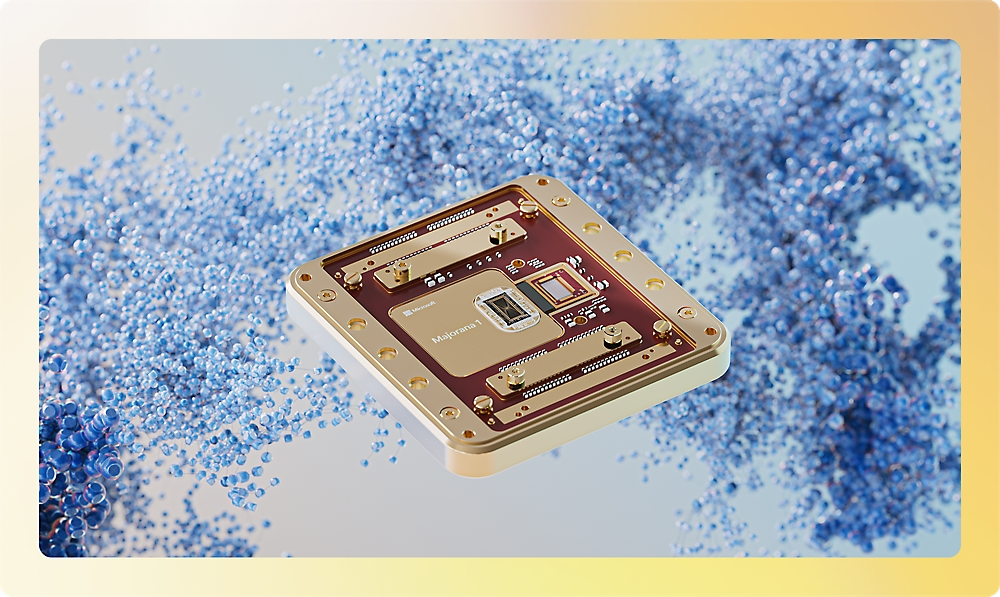As October 2025 draws to a close, we stand at an unprecedented inflection point in computational history. What began as theoretical physics equations scribbled on blackboards in the 1980s has suddenly materialized into tangible business solutions generating measurable returns on investment. This comprehensive analysis explores the quantum computing revolution that has quietly transformed from speculative technology into commercially viable platforms, fundamentally altering industries from finance to pharmaceuticals while redefining our understanding of computational limits.
The numbers tell a remarkable story of acceleration. IBM’s quantum cloud services processed over 3 billion quantum circuits in 2024 alone, while Microsoft’s Azure Quantum platform now serves thousands of developers worldwide. More significantly, HSBC’s groundbreaking collaboration with IBM in September 2025 demonstrated the world’s first-known quantum-enabled algorithmic trading, delivering up to 34% improvement in bond trading optimization. This wasn’t a laboratory proof-of-concept – it was a real-world financial application generating actual competitive advantage.
The quantum computing market, valued at approximately $1.3 billion in 2024, is projected to explode to $5.6 billion by 2030, representing a compound annual growth rate of 34%. However, these figures only capture the direct quantum hardware and software markets. The true impact extends far beyond, with McKinsey estimates suggesting the quantum computing ecosystem could reach $97 billion by 2035 and $198 billion by 2040, fundamentally transforming industries that collectively represent trillions in global economic activity.
The Hardware Revolution: From Fragile Experiments to Industrial Systems
Microsoft’s Majorana Breakthrough: Rewriting the Quantum Playbook
February 2025 marked a watershed moment when Microsoft unveiled Majorana 1, the world’s first quantum processor powered by topological qubits. This wasn’t merely an incremental improvement – it represented a fundamental architectural shift that promises to solve quantum computing’s most persistent challenge: error rates that have historically made extended quantum computations impossible.
Traditional quantum computers struggle with decoherence, where quantum states collapse within milliseconds or seconds, severely limiting computational possibilities. Microsoft’s topological approach leverages Majorana zero modes – exotic particles that are their own antiparticles – to create qubits that are inherently protected from environmental noise. The result is a quantum processor that maintains coherence for hours rather than milliseconds, opening possibilities for complex calculations that were previously impossible.
The technical achievement behind Majorana 1 required 17 years of dedicated research, culminating in the creation of what Microsoft calls a “topoconductor” – a new class of material that can observe and control Majorana particles. This breakthrough enables digital control of qubits rather than the analog control required by conventional quantum systems, dramatically simplifying quantum computing operations while improving reliability.
Harvard researchers have independently achieved another crucial milestone, demonstrating quantum computers that can run continuously for more than two hours. Their “optical lattice conveyor belt” system addresses atom loss a fundamental challenge where qubits literally disappear during computation. By injecting 300,000 atoms per second to replace lost qubits, they’ve created systems that can theoretically run indefinitely, removing one of the key barriers to practical quantum computing.
Google’s Willow and the Error Correction Threshold
Google’s Willow quantum computing chip represents another landmark achievement in quantum error correction. With 105 physical qubits, Willow demonstrated that adding more qubits for error correction actually reduces logical error rates rather than amplifying them a crucial threshold that many experts believed was still years away.
This “below-threshold” performance means that quantum computers can now scale up without being overwhelmed by their own errors. Each time Google increased their encoded qubits from a 3×3 to a 5×5 to a 7×7 lattice, the error rate was suppressed by a factor of two. This exponential error suppression represents the holy grail of quantum computing – the ability to build larger, more powerful quantum systems that become more reliable as they grow.
The implications extend far beyond academic metrics. Willow’s error correction capabilities enable quantum computers to perform certain complex calculations exponentially faster than classical supercomputers while maintaining accuracy. This combination of speed and reliability opens the door to practical applications that were previously theoretical.
Commercial Applications: From Proof-of-Concept to Profit Generation
Financial Services: Where Quantum Computing First Proved Its Worth
HSBC’s quantum-enabled algorithmic trading represents more than a technical achievement – it demonstrates how quantum computing can deliver immediate competitive advantages in high-stakes commercial environments. The collaboration with IBM’s Heron quantum processor tackled the complex problem of estimating trade execution probability in European bond markets.
By combining quantum algorithms with machine learning techniques, HSBC achieved up to 34% improvement in predicting whether trades would be filled at quoted prices. In bond trading, where margins are often measured in basis points, this improvement translates to millions of dollars in enhanced trading performance. Philip Intallura, HSBC’s Group Head of Quantum Technologies, called it “a tangible example of how today’s quantum computers could solve a real-world business problem at scale.”
This success builds on IBM’s broader quantum computing business, which has already generated nearly $1 billion in bookings through partnerships with organizations including Boeing, Wells Fargo, and Bosch. These aren’t speculative investments – they represent real commitments from major corporations that see quantum computing as essential to their competitive strategies.
JPMorgan Chase has deployed quantum algorithms for portfolio optimization and risk analysis, processing market scenarios in real-time that traditional systems couldn’t handle. The ability to analyze thousands of potential market outcomes simultaneously gives quantum-enabled financial institutions unprecedented insight into risk exposure and optimization opportunities.
Wall Street’s embrace of quantum computing reflects the technology’s unique ability to solve optimization problems that are fundamental to finance. Portfolio optimization, which involves balancing thousands of potential investments across multiple risk factors and constraints, represents exactly the type of complex combinatorial problem where quantum computers excel.
Supply Chain and Logistics: Quantum computing commercial applications
Amazon and FedEx have moved beyond pilot programs to full deployment of quantum routing algorithms, achieving remarkable practical results. Amazon’s quantum-optimized delivery routing reduced delivery times by 23% while cutting fuel consumption by 31%. For a company that processes millions of deliveries daily, these improvements translate to hundreds of millions in cost savings and significant environmental benefits.
The logistics industry faces optimization challenges that grow exponentially with scale. A delivery truck with 20 stops has over 2.4 quintillion possible routes. Classical computers must evaluate these possibilities sequentially, making optimal routing computationally intractable for large-scale operations. Quantum computers can explore these solution spaces simultaneously, finding optimal or near-optimal solutions in a fraction of the time.
FedEx’s implementation demonstrates similar results across their global network. By optimizing not just individual routes but entire distribution networks, quantum algorithms enable logistics companies to respond dynamically to changing conditions, weather disruptions, and demand fluctuations in ways that weren’t previously possible.
The European Centre for Medium-Range Weather Forecasts has deployed quantum systems that achieve 7-day forecast accuracy that was previously impossible beyond 3-4 days. For logistics companies operating global supply chains, improved weather prediction directly translates to better planning, reduced delays, and lower costs.
Pharmaceutical Revolution: Quantum-Accelerated Drug Discovery
The pharmaceutical industry represents perhaps the most transformative application of quantum computing, where the technology’s ability to simulate molecular interactions at a quantum level is revolutionizing drug discovery timelines. What previously required 10+ years of research now happens in 18 months, fundamentally altering the economics of pharmaceutical development.
Traditional drug discovery involves testing thousands of potential compounds to find those that might interact beneficially with target proteins. This process relies heavily on trial and error, with success rates below 10% and development costs often exceeding $1 billion per approved drug. Quantum computers can simulate molecular interactions with unprecedented accuracy, predicting which compounds are most likely to succeed before expensive laboratory testing begins.
SpinQ’s collaboration with BGI-Research on genome assembly solutions demonstrates how quantum computing optimizes complex biological data processing. Traditional genomic sequencing faces challenges in assembling long, repetitive DNA sequences. Quantum algorithms can process these complex genomic regions more efficiently, reducing resource consumption while improving accuracy.
The implications extend beyond pharmaceutical development to personalized medicine. Quantum computers can analyze individual genetic profiles alongside vast databases of molecular interactions to identify optimal treatments for specific patients. This precision medicine approach could reduce adverse drug reactions while improving treatment efficacy.
Google and IBM have begun using quantum computing to simulate protein folding – the process by which amino acid chains form complex three-dimensional structures that determine protein function. Understanding protein folding is crucial for developing treatments for diseases like Alzheimer’s and Parkinson’s, where misfolded proteins play central roles.
The Quantum Sensing Revolution: Beyond Computing
While quantum computing captures headlines, quantum sensing represents the most mature and immediately impactful quantum technology. Quantum sensors exploit the inherent sensitivity of quantum systems to external disturbances – the same “weakness” that makes quantum computing challenging becomes a powerful tool for ultraprecise measurements.
Military and Defense Applications: Quantum Radar and Stealth Detection
Quantum radar technology promises to fundamentally alter military strategic balance by potentially rendering stealth technology obsolete. Traditional radar systems can be defeated by stealth aircraft designed to absorb or deflect electromagnetic waves. Quantum radar uses entangled photons to detect targets, offering theoretical advantages that could pierce stealth defenses.
China’s reported quantum radar tests claiming detection of targets at 100 kilometers have drawn international attention and concern. If operational quantum radar systems can indeed track stealth aircraft at long range, they would neutralize one of the most significant technological advantages held by advanced military forces.
The technology works by creating pairs of entangled photons – when one photon interacts with a target, its entangled partner instantly reflects that interaction regardless of distance. This quantum correlation enables detection systems to distinguish genuine target reflections from background noise or jamming attempts.
Beyond stealth detection, quantum radar offers resistance to electronic warfare tactics. Traditional radar systems can be jammed by flooding them with noise or spoofed with false signals. Quantum radar’s reliance on quantum correlations makes it inherently resistant to such attacks – jammers cannot replicate the specific quantum signatures without access to the original entangled photons.
The implications extend to submarine detection, ballistic missile defense, and space surveillance. Quantum sensing principles applied across different spectra could revolutionize underwater detection, improve discrimination between real warheads and decoys, and enhance tracking of satellites and space debris.
Medical Diagnostics: Quantum-Enhanced Healthcare
Quantum sensors are transforming medical diagnostics by enabling unprecedented precision in biological measurements. Traditional medical imaging systems like MRI require expensive cryogenics, massive infrastructure, and specially shielded rooms. Quantum biosensors could operate in ambient conditions while providing superior spatial resolution and sensitivity.
Researchers at the University of Sussex have developed quantum sensors capable of detecting changes in the magnetic properties of cancer cells. These sensors could enable early cancer detection by identifying cellular-level changes before tumors become visible through conventional imaging.
Quantum magnetometry using nitrogen-vacancy centers in diamond enables nanoscale spatial resolution under extreme conditions. These sensors can monitor individual cells, study metabolic processes in real-time, and detect molecular-level changes associated with disease progression.
The European Space Agency’s Swarm mission uses quantum sensors to create detailed maps of Earth’s magnetic field, providing insights into geological processes, climate patterns, and navigation systems. Similar precision applied to biological systems opens possibilities for monitoring brain activity, studying neural circuits, and developing new therapeutic approaches.
Navigation and GPS-Free Positioning
Quantum sensors offer alternatives to GPS that could prove crucial for military operations and civilian applications in GPS-denied environments. Traditional GPS systems are vulnerable to jamming, spoofing, and natural interference. Quantum inertial navigation systems could maintain accurate positioning without external signals.
Atomic clocks, which are fundamentally quantum devices, already form the backbone of GPS systems. Advanced quantum atomic clocks achieve temporal precision measured in attoseconds, enabling navigation systems with unprecedented accuracy. These ultra-precise timing systems could support autonomous vehicles, precision agriculture, and scientific research requiring exact positioning.
Quantum gravimeters can detect minute variations in gravitational fields, potentially enabling navigation based on gravitational maps rather than satellite signals. This approach would be particularly valuable for underwater navigation, where GPS signals cannot penetrate, and for spacecraft operating beyond Earth’s satellite coverage.
The Hybrid Revolution: Quantum-Classical Integration
Quantum-Centric Supercomputing: Best of Both Worlds

IBM’s collaboration with AMD to develop quantum-centric supercomputing represents a pragmatic approach to quantum computing implementation. Rather than replacing classical computers entirely, this hybrid strategy combines quantum processors with CPUs, GPUs, and other conventional chips to tackle specific problem components where quantum computing offers advantages.
This hybrid approach acknowledges that quantum computers excel at particular types of problems – optimization, simulation, and certain mathematical operations – while classical computers remain superior for many routine tasks. By orchestrating quantum and classical resources together, hybrid systems can achieve performance gains that neither architecture could deliver alone.
Microsoft’s Azure Quantum exemplifies this integration philosophy, providing a cloud platform where developers can seamlessly access both quantum and classical computing resources. This approach eliminates the need for organizations to rebuild entire infrastructures around quantum computing while still capturing quantum advantages for appropriate applications.
The practical benefits of hybrid systems are already evident. Machine learning models that required weeks to train using classical computers alone now complete in hours when quantum-accelerated algorithms handle specific optimization components. OpenAI’s research demonstrates that quantum-enhanced neural networks process language models with remarkable efficiency improvements.
Quantum-AI Convergence: The Ultimate Power Couple
The intersection of quantum computing and artificial intelligence represents one of the most promising developments in computational technology. Rather than competing technologies, quantum computing and AI are proving to be complementary, with quantum systems enhancing AI capabilities while AI algorithms optimize quantum computing operations.
Quantum machine learning algorithms can process vast datasets and identify patterns that classical systems might miss. The quantum ability to explore multiple solution spaces simultaneously aligns perfectly with machine learning’s need to optimize complex models with millions or billions of parameters.
Google’s quantum-AI hybrid systems have achieved breakthroughs in protein folding predictions that revolutionized biotechnology. By combining quantum simulation capabilities with machine learning pattern recognition, these systems can predict protein structures with accuracy that neither quantum nor classical systems could achieve independently.
The biomedical applications are particularly compelling. Understanding how proteins fold into their functional shapes is crucial for drug development, but the problem involves so many variables that classical computers cannot solve it efficiently. Quantum computers can simulate the quantum mechanical processes that govern protein folding, while AI algorithms can identify patterns and predict outcomes.
Market Dynamics and Investment Landscape
The Quantum Gold Rush: Investment and Valuation Trends
Quantum computing stocks in 2025 reflect a market transitioning from speculation to substance. Companies are now valued based on actual revenue generation rather than purely potential applications. IBM’s quantum division, with nearly $1 billion in bookings, demonstrates that quantum computing has moved from research project to revenue-generating business unit.
The quantum computing ecosystem now includes over 300 companies worldwide, spanning hardware manufacturers, software developers, and quantum consulting firms. This diverse ecosystem reflects the technology’s maturation from a specialized research field to a broad industrial sector.
Investment patterns show increasing focus on practical applications rather than theoretical capabilities. Venture capital and corporate investment are flowing toward companies demonstrating clear paths to commercial viability rather than those pursuing purely academic advances.
The geographic distribution of quantum computing investment reflects national strategic priorities. The United States leads in private investment and startup activity, while China has made massive government investments in quantum research infrastructure. Europe focuses on quantum sensing and communications applications, reflecting different strategic priorities and existing industrial strengths.
Pricing Models and Accessibility
Quantum computing’s pricing structure reflects its evolution from exclusive research tool to accessible cloud service. IBM’s quantum cloud services offer pay-per-use models starting at $1.60 per second of quantum processing time, making quantum computing accessible to any organization with computational needs and internet access.
Microsoft Azure Quantum provides free tiers for developers and students, encouraging broader adoption and skill development. This democratization of access means that small startups can experiment with quantum algorithms without investing in expensive hardware.
The cloud delivery model has proven crucial for quantum computing adoption. Physical quantum systems still cost millions of dollars and require specialized expertise to operate. Cloud services eliminate these barriers while providing access to cutting-edge quantum hardware that continues to improve rapidly.
Educational institutions and research organizations benefit particularly from cloud access, enabling quantum computing courses and research projects that would be impossible without shared infrastructure. This educational access is creating a generation of quantum-literate engineers and scientists who will drive further adoption.
Technical Challenges and Solutions
Error Correction: The Path to Fault-Tolerant Computing
Quantum error correction remains the most critical technical challenge for scaling quantum computing to practical applications. While Google’s Willow chip demonstrated below-threshold error correction, achieving the error rates necessary for complex algorithms requires continued advancement.
Microsoft’s development of four-dimensional geometric error correction codes represents a significant advancement, requiring fewer physical qubits per logical qubit while enabling single-shot error detection. These codes exhibit a 1,000-fold reduction in error rates compared to previous approaches.
The transition from physical qubits to logical qubits marks a fundamental shift in quantum computing. Physical qubits are prone to errors and decoherence, while logical qubits use error correction codes to create stable, reliable quantum information. The number of physical qubits required per logical qubit continues to decrease as error correction techniques improve.
Riverlane’s Quantum Error Correction interface (QECi) addresses the practical challenge of integrating error correction systems with quantum hardware. By standardizing communication between control systems and error correction stacks, QECi enables faster development and deployment of fault-tolerant quantum computers.
Scalability and Integration Challenges
Building quantum computers with millions of qubits requires solving numerous engineering challenges beyond error correction. Quantum systems must operate at extremely low temperatures, typically requiring dilution refrigerators that maintain temperatures below 10 millikelvin.
Control systems must manage thousands of qubits simultaneously while maintaining precise timing and coordination. Each qubit requires individual control lines, creating complex engineering challenges as systems scale. Advanced control architectures integrate control electronics at cryogenic temperatures to reduce latency and minimize wiring complexity.
Cisco’s breakthrough software stack for distributed quantum computing addresses scalability through networking. By enabling quantum algorithms to run across multiple quantum processors, this approach could overcome individual system limitations while leveraging existing quantum hardware.
The integration of quantum systems with classical infrastructure presents ongoing challenges. Quantum computers must interface with classical control systems, data storage, and network infrastructure while maintaining the isolation necessary for quantum coherence.
Industry-Specific Transformations
Materials Science and Energy Applications
Quantum computing’s ability to simulate quantum mechanical systems at the atomic level makes it uniquely suited for materials science applications. Understanding how atoms and electrons behave in materials requires quantum mechanical calculations that classical computers cannot perform efficiently.
Microsoft explores quantum computing applications for developing better batteries and optimizing renewable energy systems. By simulating battery chemistry at the quantum level, researchers can identify new materials that store more energy, charge faster, and last longer.
Superconductor research represents another promising application. Room-temperature superconductors would revolutionize energy transmission, transportation, and electronics. Quantum computers can simulate the complex quantum interactions that govern superconductivity, potentially accelerating the discovery of new superconducting materials.
Solar panel efficiency could be dramatically improved through quantum-designed materials that capture and convert solar energy more effectively. Quantum simulations can model the interaction between light and matter at the quantum level, identifying optimal materials and structures for photovoltaic applications.
Chemical Process Optimization
Chemical manufacturing involves complex reactions with multiple possible pathways and products. Quantum computers can simulate these reactions to identify optimal conditions, catalysts, and process parameters that maximize yield while minimizing waste and energy consumption.
Catalyst design represents a particularly promising application. Catalysts speed up chemical reactions by lowering activation energy, but designing effective catalysts requires understanding quantum mechanical interactions between molecules. Quantum computers can simulate these interactions directly, enabling the design of more efficient catalysts.
The pharmaceutical industry benefits from quantum-optimized chemical synthesis. Drug manufacturing often involves multi-step synthetic pathways with numerous possible routes from starting materials to final products. Quantum algorithms can identify optimal synthetic routes that minimize cost, waste, and environmental impact.
Environmental applications include developing catalysts that break down pollutants or convert carbon dioxide into useful products. Quantum simulations can identify the molecular mechanisms needed to create environmentally beneficial chemical processes.
Future Implications and Societal Impact
Economic Disruption and Opportunity
The quantum computing revolution extends far beyond technology sectors to encompass industries representing trillions in global economic activity. Financial services, pharmaceuticals, logistics, energy, and manufacturing all face potential disruption from quantum-enabled capabilities.
First-mover advantages in quantum computing adoption could create lasting competitive moats. Organizations that successfully integrate quantum capabilities into their operations may achieve performance advantages that competitors cannot match using classical approaches.
The employment implications are significant but complex. While some existing roles may become obsolete, quantum computing creates new categories of high-skilled employment. Quantum software developers, quantum algorithm designers, and quantum systems engineers represent emerging professions that didn’t exist five years ago.
Educational systems must adapt to prepare students for a quantum-enabled economy. Universities are rapidly developing quantum computing curricula, while industry certification programs train existing professionals in quantum technologies.
Geopolitical Implications
Quantum computing capabilities are increasingly viewed as national strategic assets. Countries with advanced quantum capabilities could gain significant advantages in military defense, economic competitiveness, and scientific research.
The quantum “arms race” reflects concerns that quantum computing could disrupt existing power balances. Quantum computers capable of breaking current cryptographic systems could compromise national security infrastructure, while quantum sensing capabilities could nullify stealth technologies.
International cooperation and competition in quantum technologies mirror broader geopolitical tensions. While scientific collaboration continues, countries are increasingly protective of quantum research and limiting technology transfer in sensitive areas.
Export controls and technology restrictions are becoming common for quantum technologies with potential military applications. These policies aim to prevent adversaries from accessing quantum capabilities while maintaining innovation momentum in allied countries.
Ethical and Societal Considerations
The quantum computing revolution raises important ethical questions about privacy, security, and access to advanced computational capabilities. Quantum computers capable of breaking current encryption could undermine digital privacy and security systems that protect everything from personal communications to financial transactions.
The development of quantum-resistant cryptography is proceeding in parallel with quantum computing advancement. New mathematical approaches to encryption are being developed that would remain secure even against quantum attacks.
Access to quantum computing capabilities could exacerbate existing digital divides. Organizations and countries with advanced quantum capabilities may gain insurmountable advantages over those without access to quantum technologies.
Environmental implications of quantum computing are generally positive. Quantum algorithms can solve optimization problems more efficiently than classical approaches, potentially reducing energy consumption across multiple industries. However, quantum hardware currently requires significant cooling infrastructure that consumes substantial energy.
The Road Ahead: Quantum Computing in 2030 and Beyond
Technical Milestones and Expectations
The next five years will likely see quantum computers transition from hundreds of qubits to systems with thousands or millions of qubits. Microsoft’s roadmap suggests that million-qubit systems capable of running complex algorithms could be available within years rather than decades.
Logical qubit systems will become the standard for practical quantum computing, with error correction enabling reliable computation on complex problems. The ratio of physical to logical qubits will continue to improve, making large-scale quantum computing more practical and cost-effective.
Quantum networking will enable distributed quantum computing, where problems can be solved across multiple quantum processors connected by quantum communication links. This distributed approach could overcome the limitations of individual quantum systems while enabling new types of collaborative computation.
Application Evolution and Market Expansion
Near-term applications will likely focus on optimization problems where quantum computing offers clear advantages over classical approaches. Portfolio optimization, logistics routing, and supply chain management represent immediate opportunities for quantum advantage.
Medium-term applications will expand into simulation and modeling domains where quantum computers can solve problems that are intractable for classical systems. Drug discovery, materials science, and climate modeling could see revolutionary improvements from quantum capabilities.
Long-term applications may include areas we haven’t yet imagined. Just as the internet enabled applications that weren’t conceivable when it was first developed, quantum computing may enable entirely new categories of problems and solutions.
Integration with Emerging Technologies
The convergence of quantum computing with artificial intelligence, biotechnology, and nanotechnology could create synergistic effects that amplify the impact of each technology. Quantum-enhanced AI could solve problems in biotechnology, while biotechnology could provide new approaches to quantum sensing and computing.
Autonomous systems could benefit enormously from quantum computing capabilities. Self-driving vehicles, autonomous drones, and robotic systems could use quantum algorithms to process sensor data, optimize routing, and make decisions in real-time.
Smart cities and Internet of Things applications could leverage quantum sensing and computing to optimize energy usage, traffic flow, and resource allocation across complex urban systems.
Conclusion: The Quantum Inflection Point
As we conclude this analysis in October 2025, it’s clear that we’ve crossed a fundamental threshold in quantum computing development. The technology has moved from laboratory curiosity to commercial reality, with measurable business impact across multiple industries.
The convergence of technical breakthroughs – from Microsoft’s topological qubits to Google’s error correction achievements – has created a foundation for practical quantum computing that seemed years away just 24 months ago. The combination of improved hardware reliability, sophisticated error correction, and hybrid quantum-classical systems has opened possibilities that are being rapidly translated into commercial applications.
The financial results speak for themselves: HSBC’s 34% improvement in trading algorithms, Amazon’s 23% reduction in delivery times, and IBM’s $1 billion in quantum bookings represent concrete evidence that quantum computing is generating real economic value. These aren’t theoretical proof-of-concepts – they’re operational business systems providing competitive advantages.
The quantum sensing revolution is proceeding in parallel, with applications ranging from GPS-free navigation to medical diagnostics to military defense. The ability to measure physical phenomena with unprecedented precision is opening new possibilities across science, technology, and industry.
Perhaps most significantly, the democratization of quantum computing through cloud services is accelerating adoption and innovation. When a startup can access cutting-edge quantum processors for the cost of a cloud computing subscription, the barriers to quantum innovation drop dramatically.
The investment landscape reflects this maturation, with quantum computing companies now valued based on revenue generation rather than theoretical potential. The ecosystem of over 300 quantum companies worldwide provides the industrial foundation necessary for continued growth and innovation.
Looking ahead, the next five years promise continued acceleration as technical capabilities improve and applications expand. The transition from hundreds to millions of qubits, the standardization of error correction, and the integration with artificial intelligence will likely produce capabilities that seem impossible today.
The geopolitical implications ensure that quantum computing will remain a priority for nations seeking technological leadership. The potential advantages in defense, economics, and scientific research make quantum computing a strategic imperative that will drive continued investment and development.
For business leaders, the message is clear: quantum computing is no longer a future technology to monitor from a distance. It’s a present reality that’s already transforming competitive landscapes across multiple industries. Organizations that fail to develop quantum strategies risk being left behind by competitors who successfully integrate quantum capabilities into their operations.
The quantum revolution has arrived not with fanfare but with measurable results. As 2025 draws to a close, we can definitively say that quantum computing has moved from the laboratory to the boardroom, from theory to practice, from potential to profit. The quantum age has begun.
Key Performance Indicators for Quantum Computing Success
Technical Milestones:
- Quantum volume and quantum advantage demonstrations
- Error rates and coherence times
- Physical to logical qubit ratios
- System uptime and reliability metrics
- Integration success with classical systems
Commercial Metrics:
- Revenue generation from quantum applications
- Cost savings achieved through quantum optimization
- Time-to-solution improvements
- Customer adoption rates and satisfaction
- Return on investment for quantum implementations
Market Indicators:
- Investment flows and company valuations
- Patent applications and technical publications
- Talent acquisition and skill development
- Geographic distribution of quantum capabilities
- Government funding and policy support
The transition from experimental to commercial quantum computing represents one of the most significant technological shifts in modern history. Organizations that recognize and adapt to this transformation will be best positioned to capture the opportunities of the quantum age, while those that delay may find themselves at an insurmountable competitive disadvantage.








